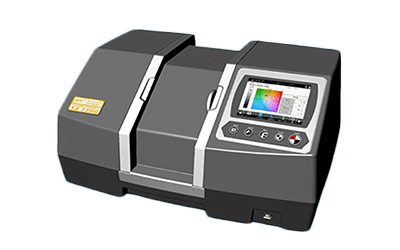What Is a Turbidimeter?

A turbidimeter is an instrument used to evaluate the turbidity of liquid samples. It is used for environmental monitoring and process control of industrial products. There are several measurement methods used in turbidimeters, including the scattered light method, transmitted light method, scattered light/transmitted light method, integrating sphere method, surface scattered light method, and particle counting method.
Turbidimeters are also available in two types: portable types, which integrate the sensor and indicator, and in-line types, where the sensor is installed in a piping system.
Applications of Turbidimeters
Turbidimeters are used in water treatment plants for controlling raw water, filtered water, and wastewater. They are also used in environmental monitoring, sewage treatment plants, and industrial manufacturing process control. Examples include monitoring water quality in public water bodies and maintaining wastewater from factories and industrial plants.
In process control, turbidimeters monitor the quality of products and control the quality of pure water used in production.
Principle of Turbidimeter
Turbidimeters use principles such as light scattering and transmission to measure turbidity. Clean water transmits more light, while turbid water scatters more light and transmits less. The standard for turbidity is determined by a turbidity standard solution, and proper calibration using these solutions is crucial for accurate evaluation.
Types of Turbidimeters
Various methods and principles are used in turbidimeters:
1. Surface Scattered Light Method
This method shines light on the liquid surface and determines the concentration of suspended solids based on light scattering. It observes the liquid surface and does not require a window in contact with the measured liquid, minimizing contamination impact.
2. Transmitted Light Method
Light is irradiated from one side of the sample, and turbidity is determined from the attenuation of transmitted light. While simple, it can be influenced by colored liquids and window dirt, making it less suitable for environmental measurements.
3. Scattered Light/Transmitted Light Method
This method irradiates light onto a sample and measures both scattered and transmitted light. The ratio of these measurements determines the turbidity, with less influence from power supply fluctuations or lamp deterioration.
4. Integrating Sphere Method
Light from a source is captured in an integrating sphere, measuring the total incident light versus scattered light. This method is less affected by the sample but is more suitable for laboratory use due to maintenance considerations.
5. Surface Scattered Light Method
Similar to the first method, this one shines light on the liquid surface and measures scattered light intensity to determine turbidity, suitable for high-turbidity samples.
6. Particle Counting Method
Using a semiconductor laser, this method counts particles, suitable for low-turbidity samples. It measures both particle concentration and turbidity without the need for zero calibration.
Additional Turbidimeter Information
1. Turbidity Standards and Turbidity Units
Turbidity standards and units vary for different measurement methods. The JIS K0101 Industrial Water Testing Method specifies standards and units for methods like visual, transmitted light, and scattered light, using solutions like carion and formazin.
2. Points to Be Noted Due to Differences in Measurement Methods
Different measurement methods in turbidimeters may yield varying results even with the same standard solution, due to differences in particle size distribution, optical properties, and detection sensitivity. Consistency in method and standard solution type is key for continuous control.